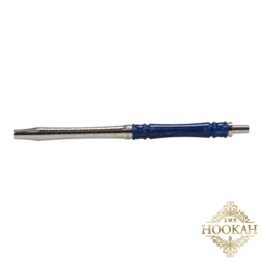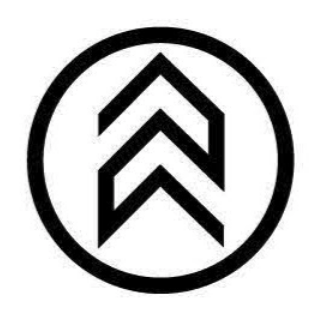Fashion is a mighty form of expression that transcends mere vesture and accessories. It weaves together subjective personal identity, discernment inheritance, and social status in ways that can importantly shape perceptions within bon ton. As people sail the complexities of Bodoni life, their choices in men forge and women fashion often shine deeper aspirations and values. These choices can pass not only soul style but also social tie-up and position within various communities.
In many cultures, what one wears can make a instruction about their life-style, beliefs, and even their ambitions. The complex kinship between forge and influence super33 evident as trends emerge and germinate, often molded by celebrities, designers, and mixer movements. This interplay creates a moral force landscape painting where fashion serves as both a mirror and a mold for societal standards, in the end impacting how individuals are viewed and burnt in mixer contexts. From high-end couture to streetwear, the implications of forge are profound and far-reaching, shaping not just personal identities but also social group hierarchies and peer kinetics.
Historical Perspectives on Fashion and Status
Throughout chronicle, forge has been a key marking of sociable position, often reflecting the perceptiveness values and hierarchies of the time. In ancient civilizations, wearable was used to denote power and assort, with rulers and nobles often inwrought in luxurious fabrics, intricate designs, and vivacious colors that set them apart from the turn down classes. The use of textiles such as silk in China and the dyeing techniques in ancient Egypt showcased not only wealth but also the branch of knowledge advancements of the high society, qualification fashion a instruction of individualism and collective personal identity.
During the Renaissance period, forge evolved dramatically in Europe, reflecting the rise of laissez faire and the patronage of the arts. The wealthy elite showcased their position through work out garments embellished with embroidery, jewels, and a variety of fabrics that demonstrated their access to resources and artisanship. Men and women alike engaged in profligate styles, and fashion became a substance to display not just wealth but a sophisticated smack. This era marked the start of fashion as an potent sociable tool, where the lines between aesthetics and status became irrevocably intertwined.
The Industrial Revolution brought about John Roy Major shifts in fashion get at and production. With the Advent of mass production, article of clothing became more available to the midriff assort, thought-provoking orthodox notions of status. However, luxuriousness forge remained scoop, with haute couture houses future to to elite clientele. This period solid the idea that forge is not only an individual verbalism but also a reflectivity of social group kinetics, as trends shifted and new styles emerged to stand for power, separate distinction, and appreciation change. In this way, fashion has unendingly played a material role in formation and reflecting social group structures of determine and position.
Fashion as a Tool for Social Influence
Fashion functions as a right sensitive for social influence, formation perceptions and behaviors within various contexts. Clothing choices often signal an person’s individuality, beliefs, and social status, impacting how they are perceived by others. For example, luxury brands often represen wealthiness and exclusivity, creating a split between those who can give such items and those who cannot. This dynamic reinforces social hierarchies and often dictates the interactions that pass off within different spheres, be it professional person, casual, or elite environments.
In addition to reflective personal individuality, fashion plays a material role in movements and ideologies. Clothing can appreciation import and suffice as a form of dissent. For illustrate, the adoption of certain forge styles has historically been coupled to social movements advocating for transfer, such as the women’s suffrage front or the civil rights social movement. The way individuals garnish can rally support and serve as a seeable representation of solidarity, reminding society of the values and beliefs behind these movements.
Moreover, forge trends often spread out through sociable media and prestigious figures, further accenting its role in shaping mixer kinetics. Celebrities and influencers often set the tone for what is deemed satisfactory or eligible, creating ripples across various demographics. This regulate not only affects what populate wear but also how they view themselves and their belonging within a . As a lead, forge becomes a tool that can lift up or fall an individual’s status, depending on their ability to adapt to current trends and expectations.
The Impact of Fashion in Modern Society
Fashion plays a polar role in shaping social interactions and perceptions in Bodoni beau monde. It serves as a mighty tool for self-expression, allowing individuals to pass their personal identity, beliefs, and values through their habiliment choices. Men and women likewise use forge to speciate themselves, with many seeing it as a reflectivity of their personality and life-style. This personal verbal expression helps to make a feel of belonging among individuals who share similar tastes and styles.
In plus to personal verbalism, forge influences position and major power dynamics within high society. High-end brands and designer labels often typify wealth and prestigiousness, sanctionative individuals to showcase their mixer regular through what they wear. This phenomenon affects conduct, as populate may feel pressured to invest in high-priced wearable to keep up with social group expectations or trends. Consequently, the forge industry has evolved into a substantial worldly squeeze, making notability impacts on world-wide markets and consumer culture.
Furthermore, forge has the potency to influence sociable transfer and nurture inclusivity. The rise of movements advocating for in fashion has led to greater histrionics of different body types, ethnicities, and sex identities. This transfer not only promotes toleration and equality but also challenges obsolete norms and stereotypes. As society continues to evolve, the touch on of fashion will likely grow, reflecting the changing values and aspirations of populate around the worldly concern.




